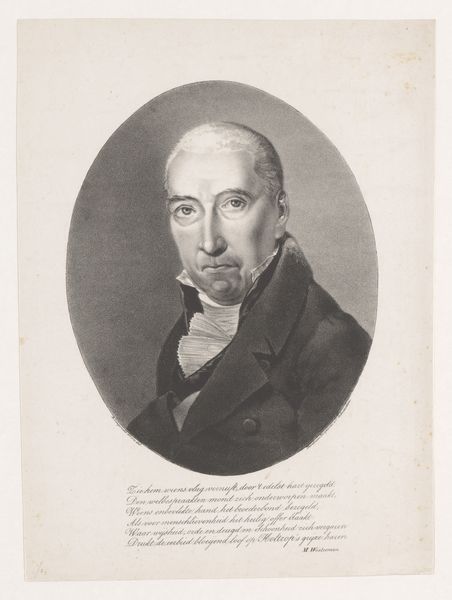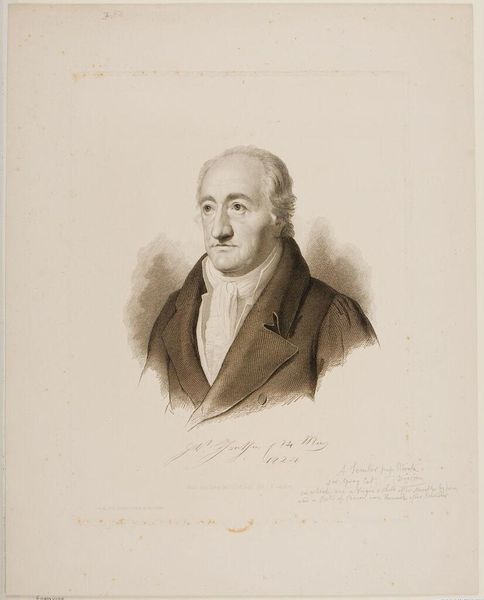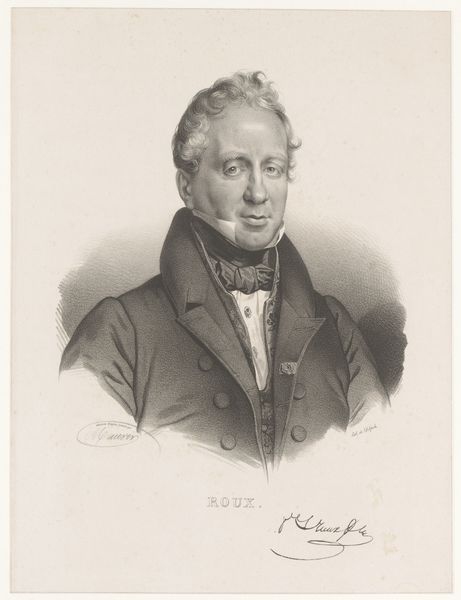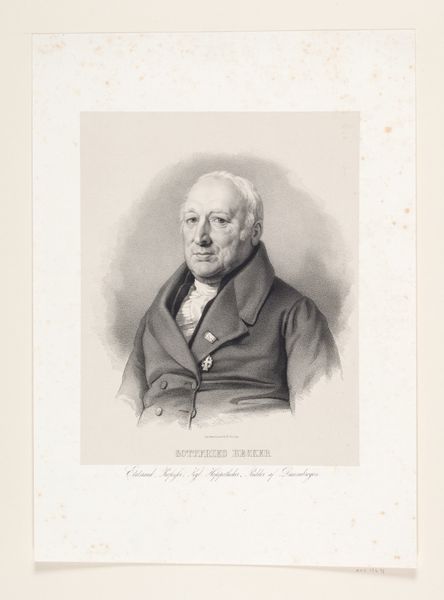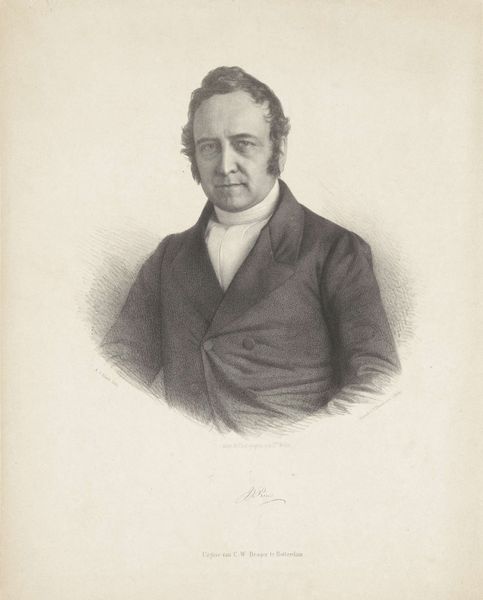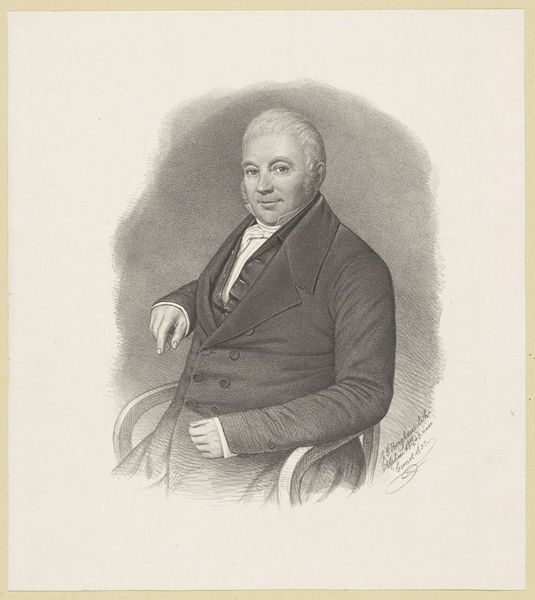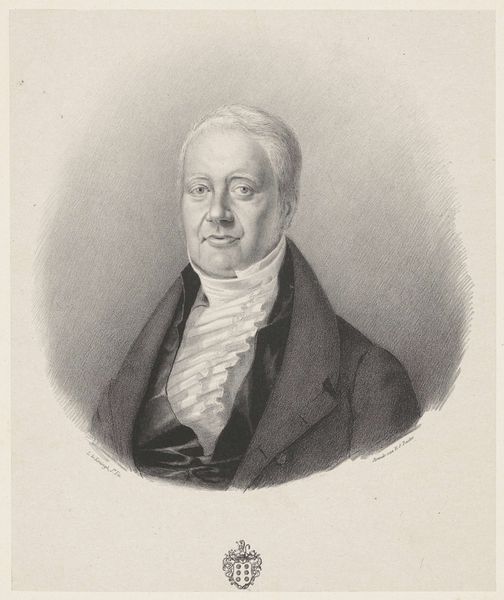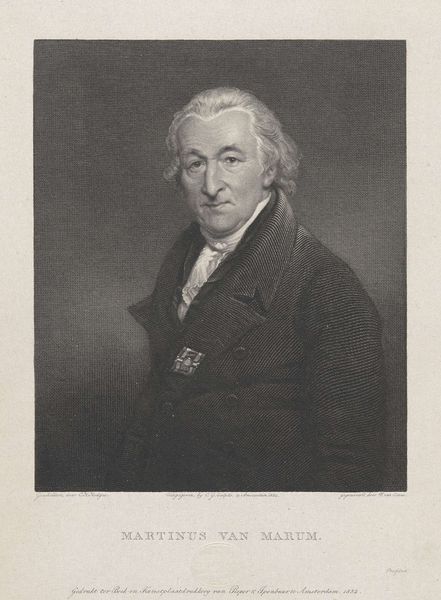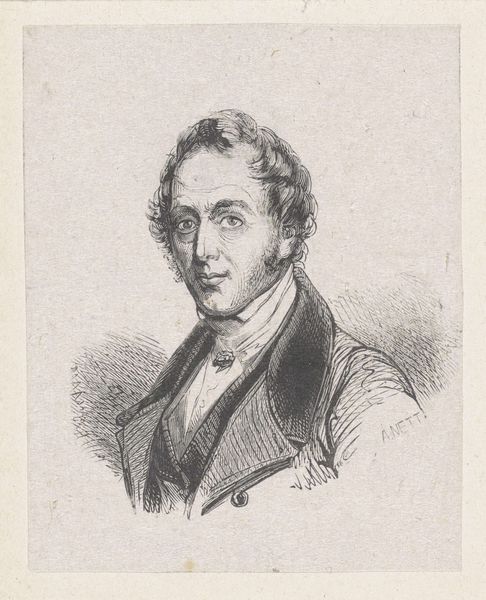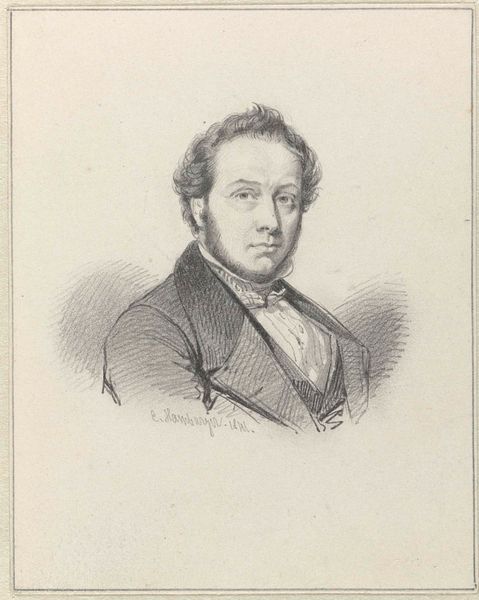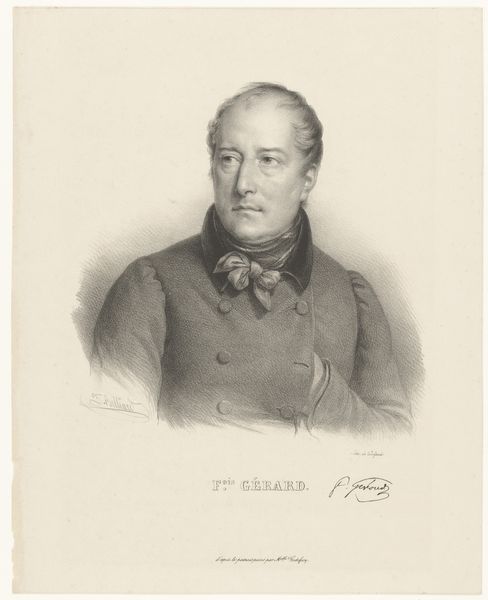
drawing, pencil
#
portrait
#
drawing
#
portrait image
#
pencil
#
portrait drawing
#
academic-art
#
portrait art
#
fine art portrait
#
realism
Dimensions: height 410 mm, width 290 mm
Copyright: Rijks Museum: Open Domain
Curator: This is a portrait of an unknown man, created sometime between 1824 and 1849. It's rendered in pencil and is currently held here at the Rijksmuseum. Editor: It's austere. The tight, meticulous pencil work gives it a somber mood. Look at how the lines are almost imperceptible yet create an almost palpable weight in his face. Curator: Pencil portraits like this offered a relatively affordable alternative to painted portraits for the middle class in the 19th century. We often overlook the democratization of portraiture during this period and how new materials played a key role. Editor: Exactly! It reflects a shift in societal values. No longer the sole domain of the elite, portraits were becoming accessible, tools for creating and reinforcing a broader social identity. And you have to consider where such drawings are displayed; the rise of public collections helped to disseminate artistic ideals, didn't it? Curator: It certainly did. This drawing would have circulated in artistic circles as an example of technique and likeness, or possibly served a commemorative purpose for family members or patrons. Consider also the materiality; pencil, paper. These were relatively novel mass-produced products during that period. Editor: Absolutely. The proliferation of such technologies helped standardize both the look and the production of portraits such as this one. In this case it gives a somewhat standardized, official feel, while the man’s very slightly tilted head gives us a glimmer of individuality in spite of the overwhelming convention. Curator: Yes, there's a quiet defiance, almost. His direct gaze and subtle expression make it more engaging than many similar works from that period. I would suggest his choice of fashion reflects social standing of course. Editor: He clearly understands how dress communicates status, aligning with contemporary values. I feel like, despite not knowing his name, we get a glimpse into a historical person. Curator: Indeed, art captures moments and allows us these precious intersections. It gives a tangible way to consider the flow of materiality across time. Editor: I appreciate how viewing this makes us consider representation not as a single flash of inspiration but through its making, a historical and socio-economic framework that shaped our encounter with it.
Comments
No comments
Be the first to comment and join the conversation on the ultimate creative platform.

